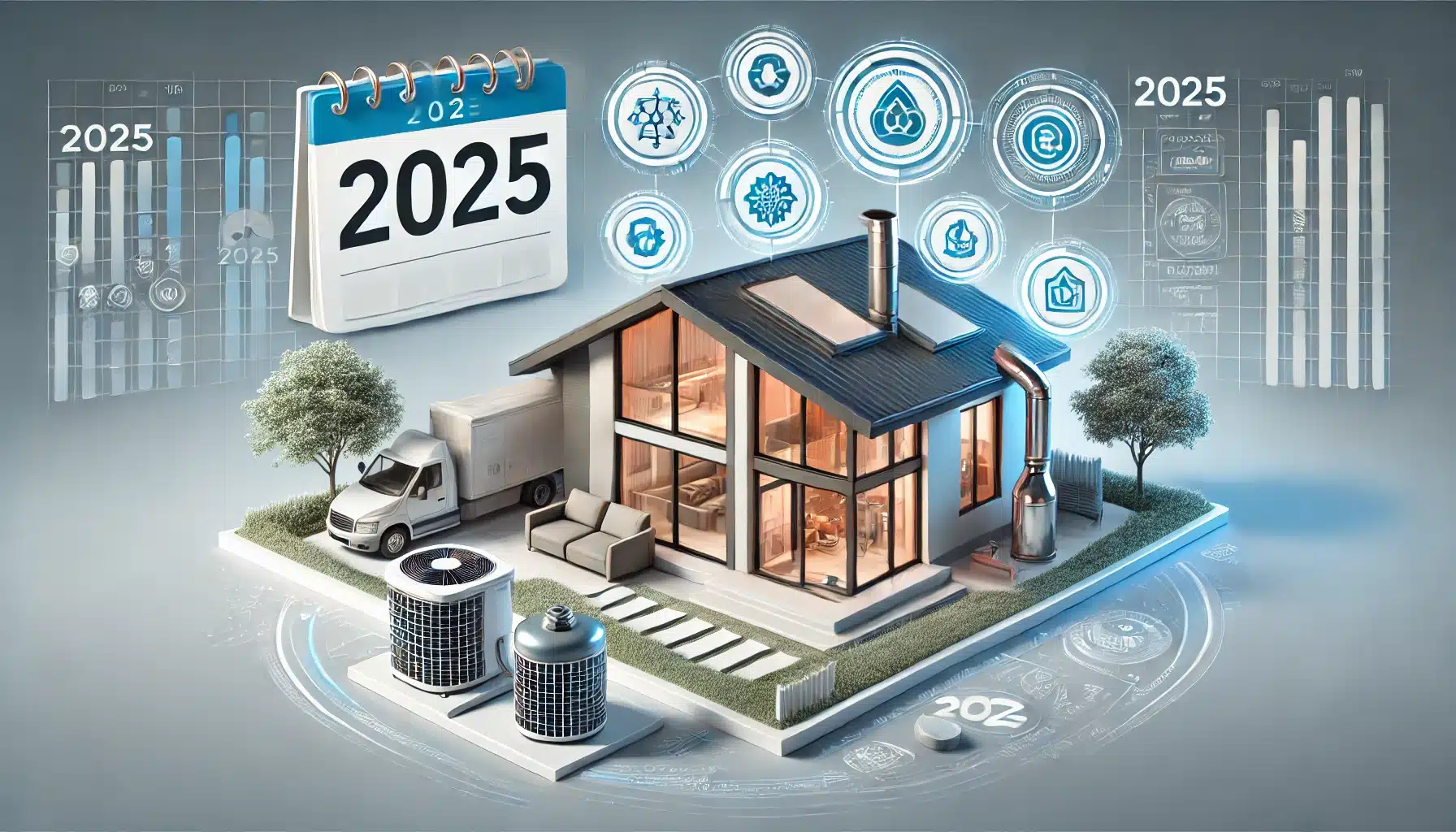As we approach 2025, significant changes in refrigerant regulations are set to impact HVAC companies and homeowners, particularly those interested in buying heat pumps. These changes aim to reduce the environmental impact of HVAC systems by phasing out high Global Warming Potential (GWP) refrigerants. In this blog post, we’ll explore what these changes entail, how they will affect the HVAC industry and homeowners, and what steps can be taken to prepare for the transition.
Understanding the Regulatory Changes
Background on Refrigerant Regulations
Refrigerants have long been a concern due to their potential to contribute to global warming and ozone depletion. Historically, the HVAC industry has used various refrigerants, including chlorofluorocarbons (CFCs) and hydrochlorofluorocarbons (HCFCs), which were phased out due to their high ozone depletion potential (ODP). The industry then shifted to hydrofluorocarbons (HFCs), which, while not harmful to the ozone layer, have high GWPs.
The Kigali Amendment and EPA Regulations
The Kigali Amendment to the Montreal Protocol, adopted in 2016, mandates a global phasedown of HFCs. The Environmental Protection Agency (EPA) in the United States has adopted regulations to comply with this amendment, targeting a significant reduction in the use of high-GWP refrigerants by 2025.
Impact on HVAC Companies
Transition to Low-GWP Refrigerants
HVAC companies will need to transition to low-GWP refrigerants, such as R-32, R-454B, and R-1234yf, which have significantly lower environmental impact compared to traditional HFCs like R-410A. This transition will require updates to equipment and training for technicians to handle new refrigerants safely.
Equipment and Training Costs
The shift to new refrigerants will necessitate investments in new equipment designed to operate with low-GWP refrigerants. Additionally, HVAC technicians will need training to manage and install these systems correctly, ensuring compliance with safety and environmental standards.
Supply Chain Adjustments
Manufacturers and suppliers will need to adjust their supply chains to accommodate new refrigerants and equipment. This may involve retooling manufacturing processes and ensuring an adequate supply of new refrigerants to meet market demand.
Impact on Homeowners
Costs of New Systems
Homeowners looking to install new heat pumps or replace existing HVAC systems may face higher initial costs due to the transition to low-GWP refrigerants. Newer systems designed for these refrigerants may be more expensive, though they often offer improved efficiency and lower operating costs over time.
Efficiency and Environmental Benefits
The new refrigerants and updated systems are typically more efficient, providing homeowners with potential energy savings. Additionally, the reduced environmental impact of low-GWP refrigerants aligns with growing consumer interest in sustainable and eco-friendly home solutions.
Availability and Transition Period
During the transition period, homeowners may still find systems using older refrigerants available for purchase. However, it’s advisable to consider the long-term availability of refrigerants and serviceability of such systems as regulations fully take effect.
Steps to Prepare for the Transition
For HVAC Companies
- Training and Certification: Ensure all technicians are trained and certified to handle new refrigerants and systems.
- Equipment Upgrades: Invest in new equipment compatible with low-GWP refrigerants.
- Customer Education: Educate customers about the benefits of transitioning to new refrigerants and the potential cost savings from increased efficiency.
For Homeowners
- Research and Plan: Research available heat pump options that use low-GWP refrigerants and plan for future HVAC needs.
- Budget for Upgrades: Budget for potential higher upfront costs of new systems and consider financing options or incentives.
- Energy Efficiency: Focus on the long-term energy savings and environmental benefits of upgrading to a new system.
Conclusion
The upcoming changes in refrigerant regulations for 2025 mark a significant shift towards more sustainable HVAC solutions. While these changes present challenges for both HVAC companies and homeowners, they also offer opportunities for cost savings, improved efficiency, and a reduced environmental footprint. By preparing now, HVAC professionals and homeowners can navigate this transition smoothly and benefit from the advancements in HVAC technology.
This in-depth look at the 2025 refrigerant regulations provides a comprehensive understanding of the changes, impacts, and preparation steps necessary for both HVAC companies and homeowners. By staying informed and proactive, the transition to low-GWP refrigerants can be managed effectively.

